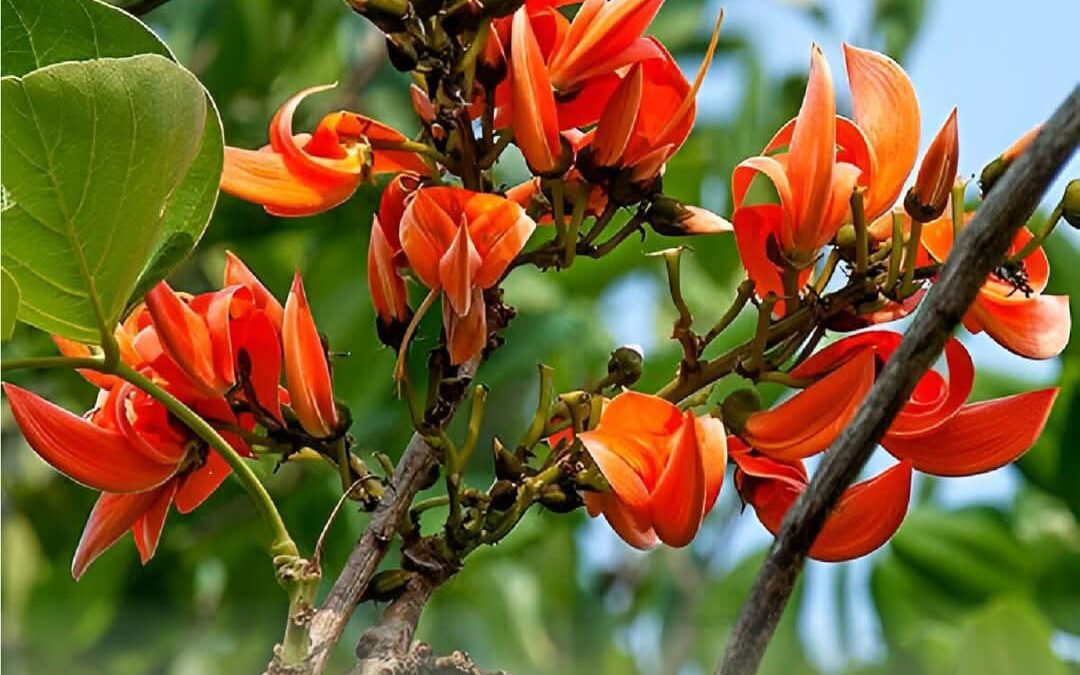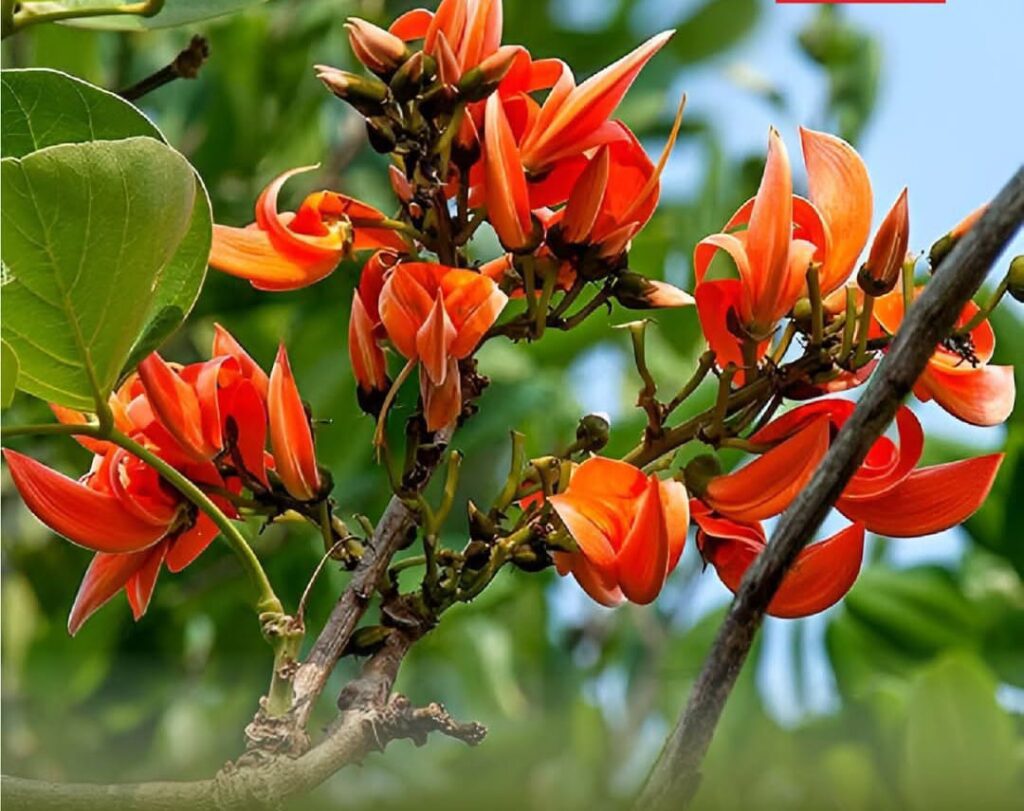पलाशः किंशुकः पर्णी यज्ञियों रक्तपुष्पकः। क्षारश्रेष्ठी वातपोथी ब्रहावृक्षः समिद्वरः “Palash, Kinshuk, Parni, sacrificial wood, red-flowered tree, best among alkalis, bearer of the wind, Brahma’s tree, and excellent for sacrificial sticks.”
In the vast expanse of India’s rich cultural heritage, there exists a tree that has been revered for centuries for its sacred leaves, vibrant flowers, and numerous benefits. The Palash tree (Butea monosperma), also known as the “Flame of the Forest” and “Parrot Tree”, “Dhak”,is a medium-sized deciduous tree that holds a special place in Hinduism.
Mythological Significance
In Hindu mythology, the Palash tree is believed to be a form of Agni Dev, the God of Fire. According to legend, the tree was cursed by Goddess Parvati for disturbing her and Lord Shiva’s privacy. This mythological significance has led to the Palash tree being described in detail in various Samhitas.
Cultural Significance
The Palash tree has trifoliate leaves, depicting the holy structure with God Vishnu in the middle, Brahma on the left, and Shiva on the right. Its beautiful flowers are offered to Hindu deities like Lord Ganesha, Shiva, Vishnu, Surya Dev, Goddess Lakshmi, Parvati, and Kali. In ritual sacrifices to Goddess Kali, flowers are presented in place of blood. To make sacred fire, dry stem fragments of the Palash tree are used.
Ecological Importance
The Palash tree is also ecologically important as it is drought-tolerant in nature, thus can be easily grown in waste lands or non-cultivable lands. They not only convert wasteland into useful land but also provide several ecological services to the ecosystem. The Palash tree helps mitigate climate issues, conserve soil, and support atmospheric nutrient cycling. It also lowers atmospheric carbon dioxide concentrations, thus helping to combat global warming.
Medicinal and Economic Benefits
The Palash tree has numerous medicinal and economic benefits. Leaves are used for making biodegradable plates (Dona pattals). Teshu-Madhu (Palash Honey) is made from flower nectars, having nutritional and medicinal values. The Rakta (red) flowers are used for the Holi festival of colors, providing a natural and safe alternative to synthetic colors.
The Palash tree is a treasure trove of cultural, ecological, and medicinal significance. Its numerous benefits make it an ideal tree for plantation drives, helping to combat global warming and promote sustainable development. As we strive to preserve our natural heritage, the Palash tree stands as a shining example of the importance of conserving our native trees.
Popular Stories
How To Revive Your Rainwater Harvesting System
The Water Couple’s Journey: From Cleaning Tanks to Complete Water Solutions!
Locals Felling Trees Near Sec A Pkt C
Winning Has Become a Habit for Divya
Is Green Park Heading Towards A Slum
Haphazard Parking, Narrow Walking Space In M Block Market
Recent Stories from Nearby
- Elections at Silver Oaks April 5, 2025
- Silver Oaks Rangotsav: A Vibrant Celebration of Holi April 5, 2025
- Sarvam Shakti: A Decade of Empowerment and Grace April 5, 2025
- Turning Waste into a Valuable Resource April 5, 2025
- Stray Dogs Menace & Management, A Block Extension April 5, 2025








